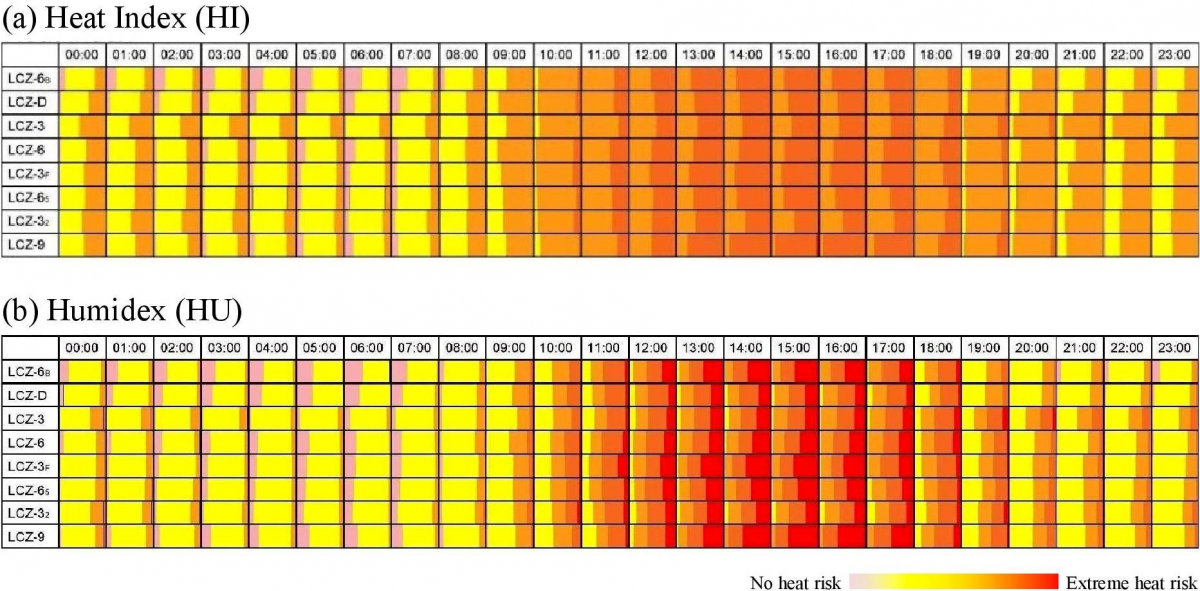A new study investigating relationship between heat stress and local climate zones has found that sparsely built areas in local climate zones are highly susceptible to daytime heat stress, while night-time heat stress was prevalent in the compact zones.
The study which establishes the direct relationship between heat stress and the nature of local climate zones can help in the climate-resilient planning of urban areas.
India faces major risks from climate change-driven extreme heat. In recent years, several states/districts/cities/towns in India have been severely affected and experiences extreme heat stress. The city of Nagpur, located in the Vidarbha region of Maharashtra state, has a tropical climate with dry conditions prevailing throughout the year. Summer seasons are extremely hot. Recently, the city has experienced extreme temperatures with recurrent heatwaves of increasing duration and intensity.
Researchers led by Dr. Rajashree Kotharkar from Visvesvaraya National Institute of Technology (VNIT), Maharashtra, investigated the relationship between heat stress and local climate zones (LCZs) of Nagpur city using two indices, heat index (HI) and humidex (HU). They identified eight LCZs covering more than 80% of city’s land cover to assess heat stress scenario of Nagpur and concluded that sparsely built areas (LCZ 9) were highly susceptible to daytime heat stress while night-time heat stress was prevalent in the compact zones (LCZs 3 and 32).
The LCZs are formally defined as the regions of uniform surface cover, structure, material, and human activity that span hundreds of meters to several kilometers in horizontal scale.
The researchers who investigated urban climatological aspects of built environment and intra-urban variation in thermal comfort regime across different local climate zones (LCZs) of Nagpur city earlier identified strategies to mitigate the Urban Heat Islands (UHI) effect in critical LCZs.
In this study published in the journal ‘Urban Climate’, the researchers analyzed whether different LCZs have an impact on heat stress levels and identified the LCZs prone to heat stress. Furthermore, a logistic regression model was developed to understand percentage change in odds for LCZs using predictor variables.
The LCZ map of Nagpur prepared in a previous study funded by Science and Engineering Research Board (SERB), DST, Govt. of India, was applied to assess summertime heat stress across different zones. The team consisting of architects, urban planners, and mathematicians collected summertime micro-meteorological data for two consecutive years (2017 and 2018) across different local climate zones in Nagpur city.
The percentage distribution of heat stress conditions across LCZs was computed using heat index and humidex. At a given time, HU shows higher risk than HI for a particular LCZ under similar weather conditions. In case of HI, during the daytime, mostly ‘hot’ and ‘very hot’ conditions are observed, while for HU, ‘hot’ and ‘very hot’ and ‘extremely hot’ conditions were observed.
In the research supported by Human Capacity Building (HCB) Programme of CCP-SPLICE, Department of Science & Technology (DST), Govt. of India, two kinds of probabilities were investigated, viz. the distribution of heat stress levels in a particular LCZ and how vulnerable are various LCZs to a given heat stress level. The research confirmed thermal differentiation across different local climate zones and supports the application of LCZ scheme as a potential framework to evaluate city-level heat stress.
Publication link: https://doi.org/10.1016/j.uclim.2021.100784
For more details, Dr. Rajashree Kotharkar, Professor, Department of Architecture & Planning, Visvesvaraya National Institute of Technology (VNIT), Maharashtra, can be contacted at (rskotharkar[at]gmail[dot]com).

Figure 1. (a) Logger location at LCZ 3 (b) Logger location at LCZ 9 (c) Canopy level view of LCZ 6B (d) Location of Maharashtra state in India (e) Location of Nagpur city (f) LCZ classification of Nagpur city

Figure 2. Distribution of heat stress across LCZs






























